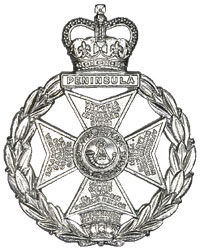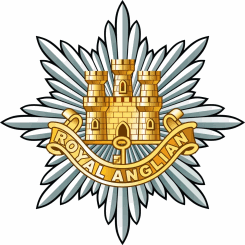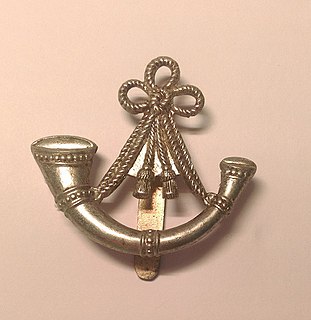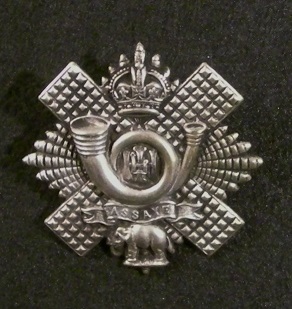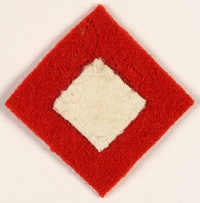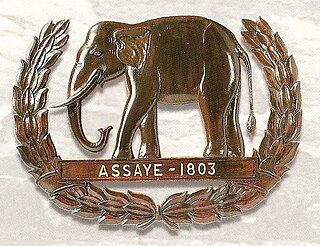Hindoostan was a battle honour awarded to the following regiments of the British Army for their service during the conquest of British India between 1780 and 1823:

A battle honour is an award of a right by a government or sovereign to a military unit to emblazon the name of a battle or operation on its flags ("colours"), uniforms or other accessories where ornamentation is possible.

The British Army is the principal land warfare force of the United Kingdom, a part of British Armed Forces. As of 2018, the British Army comprises just over 81,500 trained regular (full-time) personnel and just over 27,000 trained reserve (part-time) personnel.
- 8th King's Royal Irish Hussars
- 17th (Leicestershire) Regiment of Foot, later the Royal Leicestershire Regiment
- 36th (Herefordshire) Regiment of Foot, later 2nd Battalion, Worcestershire Regiment
- 52nd (Oxfordshire) Regiment of Foot, later 2nd Battalion, Oxfordshire and Buckinghamshire Light Infantry
- 71st (Highland) Regiment of Foot, later 1st Battalion, Highland Light Infantry
- 72nd (Highland) Regiment of Foot, later 1st Battalion, Seaforth Highlanders
- 76th (Hindoostan) Regiment of Foot, later 2nd Battalion, The Duke of Wellington's Regiment (West Riding)

The 8th King's Royal Irish Hussars was a cavalry regiment in the British Army, first raised in 1693. It saw service for three centuries including the First and Second World Wars. The regiment survived the immediate post-war reduction in forces, and went on to distinguish itself in the battles of the Korean War, but was recommended for amalgamation in the 1957 Defence White Paper prepared by Duncan Sandys. The regiment was amalgamated with the 4th Queen's Own Hussars, to form the Queen's Royal Irish Hussars in 1958.

The Leicestershire Regiment was a line infantry regiment of the British Army, with a history going back to 1688. The regiment saw service for three centuries, in numerous wars and conflicts such as both World War I and World War II, before being amalgamated, in September 1964, with the 1st East Anglian Regiment, the 2nd East Anglian Regiment and the 3rd East Anglian Regiment to form the present day Royal Anglian Regiment, of which B Company of the 2nd Battalion continues the lineage of the Royal Leicestershire Regiment.
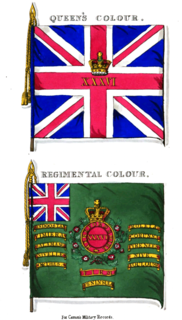
The 36th (Herefordshire) Regiment of Foot was an infantry regiment of the British Army, raised in 1701. Under the Childers Reforms it amalgamated with the 29th (Worcestershire) Regiment of Foot to form the Worcestershire Regiment in 1881. Its lineage is continued today by the Mercian Regiment.



